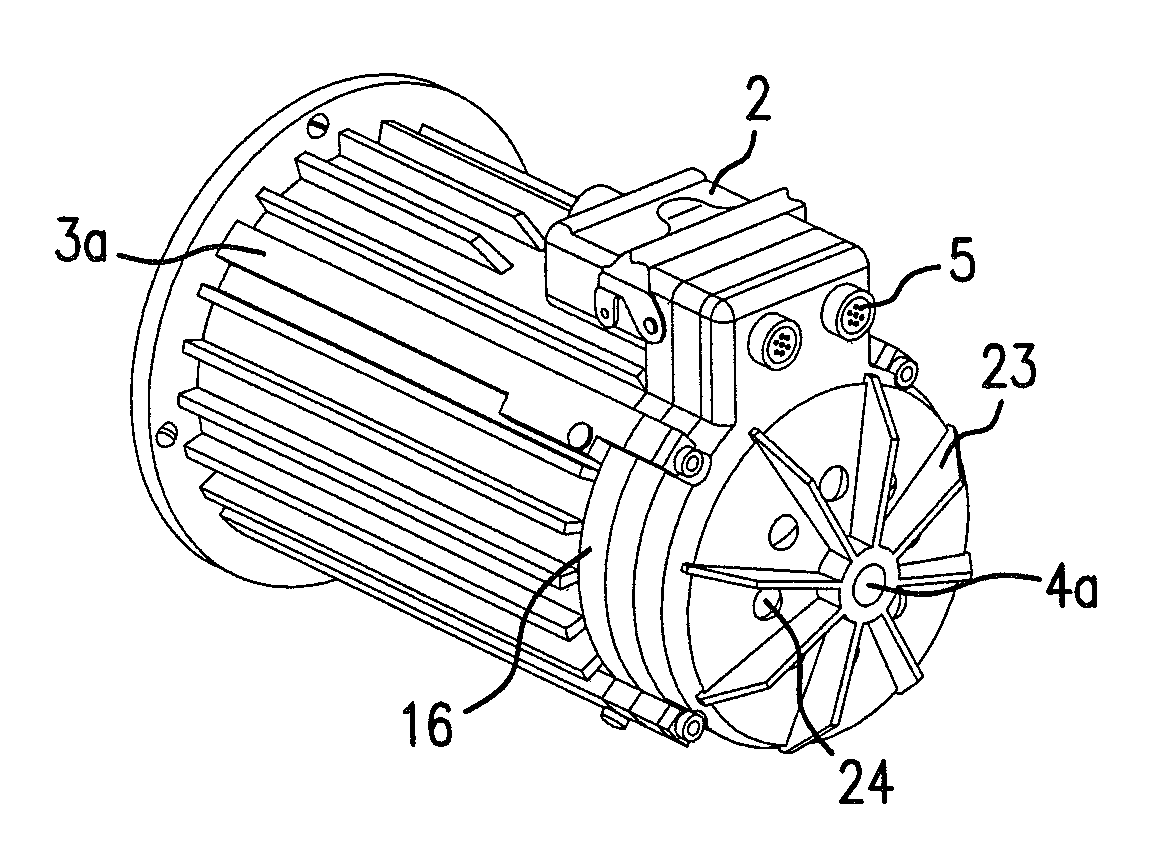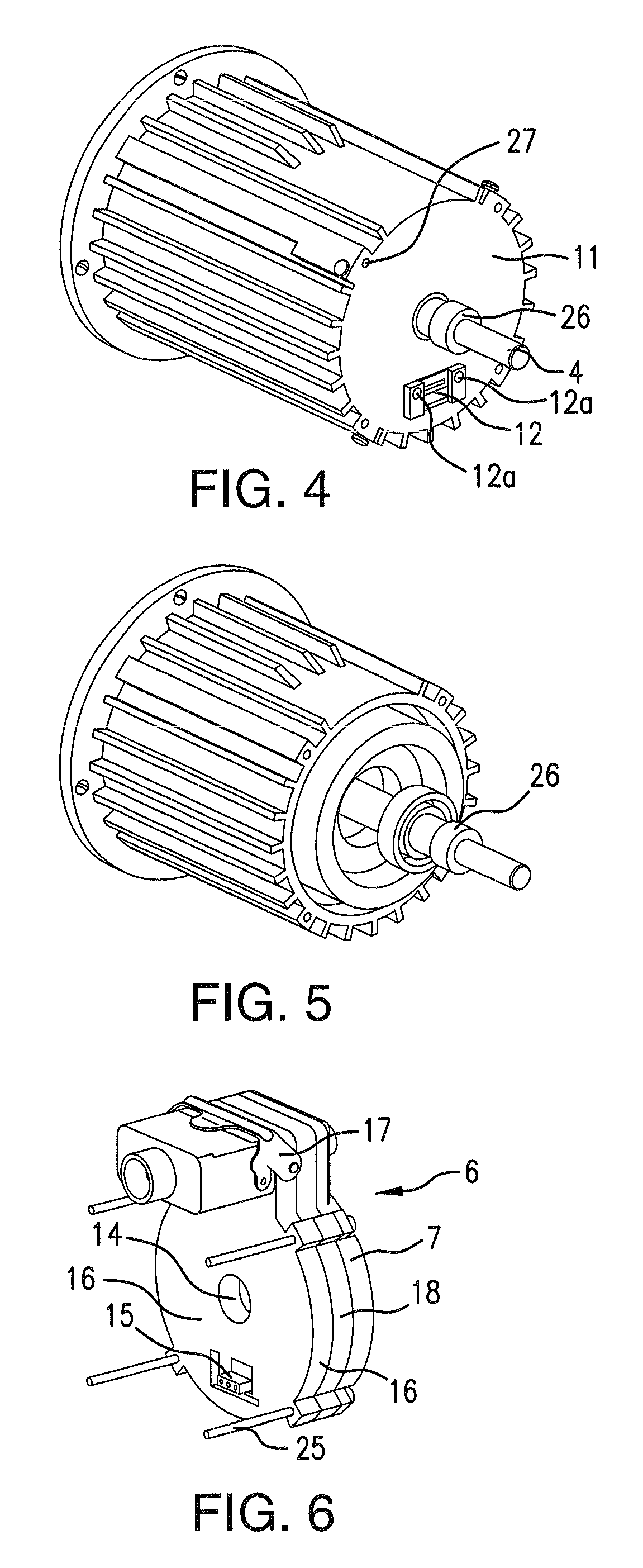Converter motor
a converter motor and electric motor technology, applied in the direction of electrical apparatus, dynamo-electric machines, supports/enclosements/casings, etc., can solve the problems of inefficiency at partial loads, fixed speed and rotation direction, and need for separate start-up devices, etc., to achieve less installation space, cost-friendly, and easy electrical connection
- Summary
- Abstract
- Description
- Claims
- Application Information
AI Technical Summary
Benefits of technology
Problems solved by technology
Method used
Image
Examples
Embodiment Construction
[0050]FIGS. 1a and 1b show an inventive converter motor 1 with a motor housing 3, on which a converter unit 6 is located. Reference numeral 8 indicates a fan hood of the converter unit, which also includes a large number of openings in its back wall 8a, for ventilation.
[0051]The mains connection is plugged directly into converter unit 6. A socket (e.g., DESINA) is integrated in the base plate or cover 7 of converter (see FIG. 4). Plug 2 rests on motor 1 in a space-saving manner, thereby minimizing the amount of installation space required for the converter motor. The cable outlet direction of plug 2 may be adapted to the required conditions in any manner necessary by selecting the plug sleeve accordingly.
[0052]The unit composed of motor and converter unit may be designed with degree of protection IP 65. Since the converter unit has a closed housing, the only concern is to ensure that the system have a tight seal in the region of the winding termination, which may be attained, e.g., ...
PUM
 Login to View More
Login to View More Abstract
Description
Claims
Application Information
 Login to View More
Login to View More - R&D
- Intellectual Property
- Life Sciences
- Materials
- Tech Scout
- Unparalleled Data Quality
- Higher Quality Content
- 60% Fewer Hallucinations
Browse by: Latest US Patents, China's latest patents, Technical Efficacy Thesaurus, Application Domain, Technology Topic, Popular Technical Reports.
© 2025 PatSnap. All rights reserved.Legal|Privacy policy|Modern Slavery Act Transparency Statement|Sitemap|About US| Contact US: help@patsnap.com



